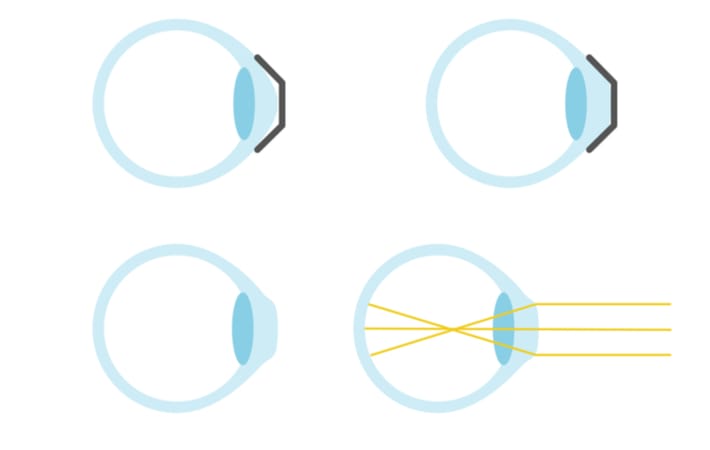I do a lot of corneal reshaping with my patients. It’s a very effective way to slow myopia’s progression in kids without asking them to wear glasses or contact lenses during the day.
But when I introduce the concept of corneal reshaping to parents, I’m usually met with the same question: “is corneal reshaping safe for my child”?
It’s a fair question. Talking about reshaping a child’s cornea sounds invasive and a little frightening. In reality, the treatment is relatively safe and non-invasive. However, like any medical treatment, there are some risks involved.
Let’s look at corneal reshaping therapy, how it works, and whether the rewards outweigh the risks.
What Is Corneal Reshaping?
Corneal reshaping is exactly what it sounds like: a treatment that changes the shape of a child’s cornea, albeit temporarily. But before we talk about how corneal reshaping works, we need to touch on the purpose of corneal reshaping, which is often myopia control.
Myopia Control
Myopia or nearsightedness usually develops in kids because their eyeball is too long compared to the cornea’s curve. As a result, light focuses just in front of the retina rather than directly on the retina, causing distant objects to look blurry.
This issue tends to get worse as children age because as they grow, their eyeballs get longer. The longer their eyeballs grow, the worse their distance vision becomes.
Myopia control is a process designed to slow the progression of myopia, which preserves more of their distance vision in the relatively short-term. In the long-term, this could save your child from serious eye health issues like retinal detachments, cataracts, and glaucoma.
How Corneal Reshaping Works
Corneal reshaping is a non-invasive, non-surgical process that uses gas-permeable rigid contact lenses.
Unlike most contact, the lenses used for corneal reshaping are only worn at night. As the child sleeps, their corneas take the shape of the contact lens, which changes the way light focuses in their eyes, correcting their vision.
Their corneas will then maintain this new shape throughout the day so they can see clearly at all distances without wearing glasses or contact lenses. As long as the child wears their lenses every night at bedtime, their vision will remain clear during the day.

Corneal reshaping contact lenses also create something called peripheral defocus. This process signals to the brain that the child’s eyes are long enough, which significantly slows their eyeball growth.
Slowing down the eye’s growth means the child is less likely to develop high myopia (or a very strong prescription).
Are There Any Risks?
Even though this treatment changes the eye’s fundamental structure, studies indicate that it is quite safe, even for children. Still, just like any other type of contact lens, there is the potential for infection.
Infection
When corneal reshaping contact lenses are properly used, stored, and cleaned, they are unlikely to cause infection. However, if you or your child don’t follow the right care routine, they could develop a condition called microbial keratitis.
Microbial keratitis is a bacterial infection of the cornea. Symptoms can include:
- Redness
- Soreness
- Sensitivity to light
- Blurry vision
- Discharge
- Excessive tears
This infection is treated with topical antibiotics and usually clears up quite quickly. However, without treatment, it can lead to serious complications and even blindness. If you notice these symptoms, see your eye doctor immediately to get the appropriate treatment and avoid long-term complications.
Can I Mitigate the Risks?
Proper Fitting
It’s important to get your child’s lens fitting done by an experienced professional who has worked with corneal reshaping lenses before.
Lens Hygiene
Most corneal reshaping lenses are designed to be replaced yearly, depending on the brand.
Your optometrist will give you detailed care instructions when you first take the corneal reshaping lenses home. You must follow these to the letter to keep your child’s eyes safe.
Progress Evaluations
Seeing your optometrist for regular follow-up appointments is important to track your child’s myopia progression. If their myopia isn’t slowing down fast enough, your optometrist may want to try another method of myopia control or combined corneal reshaping with another method for maximum results.
Are the Risks Worth the Rewards?
This is a difficult question to answer. Ultimately, each parent has to weigh the short-term risks of corneal reshaping therapy with the long-term risks of allowing myopia to progress.
In my professional opinion, assuming the child is a good candidate for corneal reshaping therapy, I think the potential benefits far outweigh the relatively minor risks. Still, I would encourage any parent to discuss the topic with their child’s optometrist and ask questions. Your doctor will be able to give you more detailed and expansive answers.


